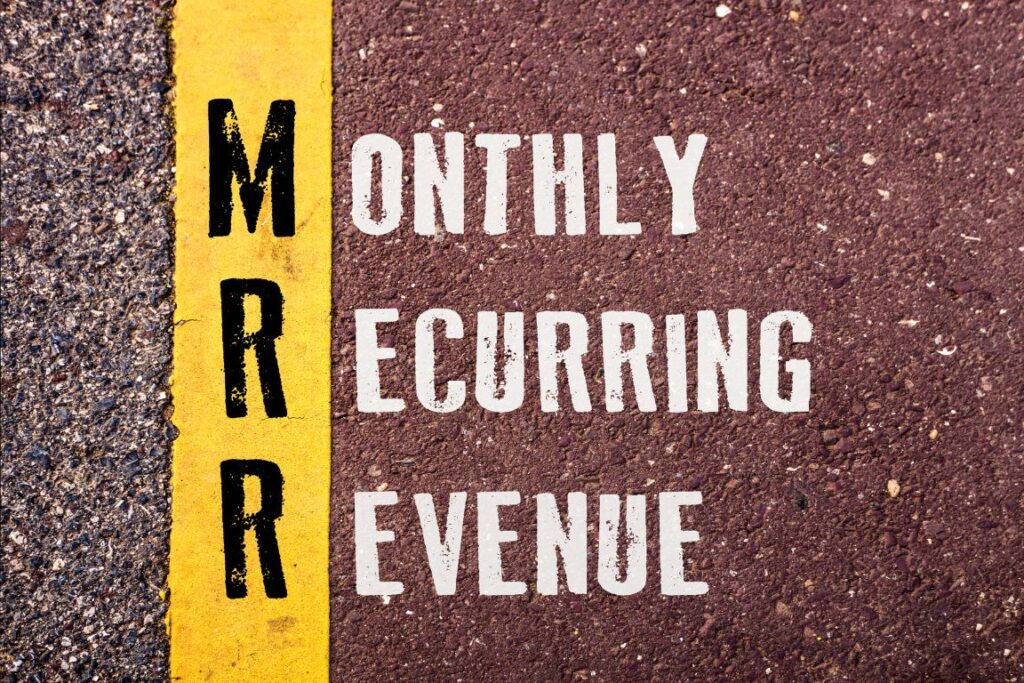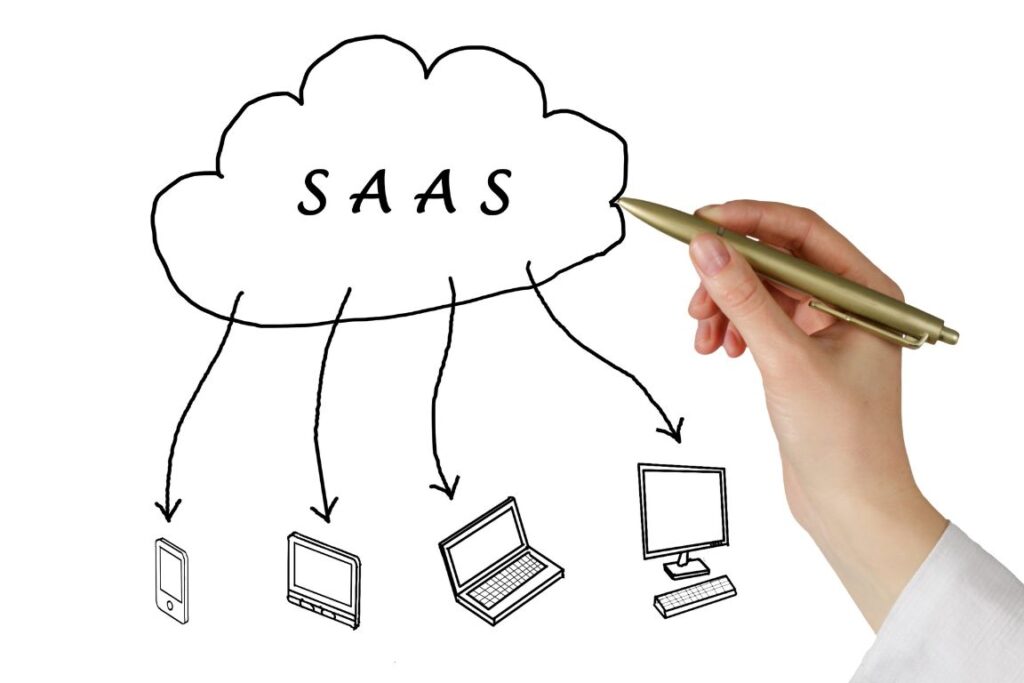Is SaaS Profitable?
The digital economy of 2025 has firmly established Software-as-a-Service (SaaS) as a dominant and highly attractive business model. For entrepreneurs and investors alike, the question is no longer if SaaS can be profitable, but how to ensure it achieves its significant profit potential. The answer is a resounding yes, SaaS is highly profitable when executed with precision and a deep understanding of its unique economic levers. Unlike traditional software, which relies on one-time licenses, SaaS thrives on sustained customer relationships and predictable revenue streams, positioning it as a cornerstone of modern business and a powerhouse of recurring value. This comprehensive guide will delve into the multifaceted reasons behind SaaS profitability, exploring the core economic advantages, crucial metrics, and strategic approaches that enable companies to not just survive but flourish in this dynamic sector.

Understanding the SaaS Profitability Equation
SaaS profitability isn’t a fluke; it’s the result of a meticulously designed business model that leverages several inherent advantages. These advantages, when managed effectively, create a powerful engine for predictable income and scalable growth.
1. The Power of Recurring Revenue: The Predictable Lifeline
At the heart of SaaS profitability lies its recurring revenue model. Instead of chasing one-off sales, SaaS companies secure monthly or annual subscriptions, creating a consistent and predictable income stream. This predictability is a game-changer for financial planning and long-term stability.

- Predictable Cash Flow: Knowing how much revenue to expect each month or quarter allows for better budgeting, resource allocation, and strategic investment. This steady “fuel” keeps the business running smoothly, enabling sustained growth without constant anxiety over sales fluctuations.
- Enhanced Valuation: For investors, a business with predictable revenue is far more attractive. Metrics like Monthly Recurring Revenue (MRR) and Annual Recurring Revenue (ARR) become critical indicators of health and future potential, often leading to higher company valuations and easier access to SaaS funding.
- Focus on Customer Lifetime Value (CLTV): The recurring nature shifts the focus from merely acquiring customers to retaining them and increasing their value over time. A customer acquired today can generate revenue for months or years, meaning the initial Customer Acquisition Cost (CAC) is recouped many times over. This emphasis on customer retention through continuous value delivery is fundamental to maximizing SaaS profitability. Companies with high Net Revenue Retention (NRR) – meaning they not only retain existing revenue but also grow it through upsells and cross-sells – demonstrate exceptional profitability potential.
- Smoother Operations: Regular subscriptions reduce the need for aggressive, high-pressure sales cycles every single month. Instead, sales teams can focus on quality leads and building relationships, knowing that existing customers are contributing a stable base.
2. Low Marginal Costs: Efficiency at Scale
One of the most compelling economic advantages of SaaS is its low marginal cost of serving each additional user. Once the core software product is developed, the cost to add another subscriber is minimal compared to traditional businesses.
- Software Duplication: Unlike physical products that require manufacturing, warehousing, and shipping for each unit, software can be duplicated and distributed digitally at near-zero cost.
- Infrastructure Leveraging: Modern cloud infrastructure (AWS, Azure, Google Cloud) allows SaaS companies to efficiently scale computing resources up or down as needed. While there are costs associated with hosting and maintenance, these costs often grow less than linearly with the number of users, especially in a multi-tenant architecture where multiple users share the same application instance.
- Automated Support & Onboarding: While initial customer support and user onboarding require investment, many processes can be automated through self-service knowledge bases, AI-powered chatbots, and intuitive user interfaces. This significantly reduces the marginal human cost per user as the customer base expands.
- Centralized Updates & Maintenance: When an update or bug fix is developed, it can be deployed to all users simultaneously, incurring a single development and deployment cost, rather than requiring individual installations or physical updates. This contributes directly to high gross margins in SaaS.
3. High Scalability: Unbounded Growth Potential
SaaS products possess an inherent high scalability that is difficult for many other business models to match. This ability to grow rapidly without a proportional increase in costs is a direct driver of profitability.
- Rapid User Base Expansion: With effective marketing your SaaS strategies (SEO, content marketing, digital advertising, virality), a SaaS product can attract thousands or even millions of users relatively quickly. There’s no physical inventory to manage, no production capacity limits, and no geographical barriers.
- Global Reach from Day One: The internet enables global market access. A SaaS product built in India can immediately serve customers in the US, Europe, or anywhere with an internet connection. This massively expands the total addressable market without requiring a physical presence in each region, boosting SaaS growth strategies for global expansion through internationalization and localization.
- Product-Led Growth (PLG): Many successful SaaS companies leverage a PLG model, where the product itself drives user acquisition, retention, and expansion. By offering a free trial or freemium version that delivers immediate value, users can onboard themselves, demonstrate ROI, and convert to paying customers with less direct sales intervention, leading to lower CAC and higher scalability.
- Efficient Team and Operations Scaling: While a SaaS company grows, its SaaS team and operations can be scaled more efficiently than traditional businesses. Roles can be specialized, automation implemented, and remote workforces leveraged, allowing for growth without an exploding headcount.
4. Global Market Access: Opportunities Without Borders
The internet is borderless, and so is the potential market for SaaS. This global reach is a significant factor in driving profitability.
- Vast Addressable Market: Your potential customer base isn’t limited by geography. A niche solution for a specific industry can find users across continents, turning a seemingly small niche into a highly profitable one globally. This is particularly true for Micro-SaaS solutions which often target global niche communities.
- Diverse Revenue Streams: Access to a global market allows for diversification of revenue streams, reducing reliance on any single region’s economic performance.
- 24/7 Sales Cycle: Your product can be purchased and onboarded by customers in different time zones around the clock, effectively creating a continuous sales cycle.
- Localization Advantages: While not a “cost-free” endeavor, investing in internationalization and localization can unlock massive new markets, further enhancing profitability by making the product resonate culturally and linguistically with diverse users.
Key Metrics to Track for SaaS Profitability
To ensure your SaaS business is on the path to high profitability, it’s essential to track the right analytics and key SaaS metrics. These metrics provide insights into the health of your recurring revenue model and guide strategic decisions.
- Monthly Recurring Revenue (MRR) / Annual Recurring Revenue (ARR): The cornerstone metrics representing predictable recurring income. Tracking growth, new MRR, expansion MRR, and churned MRR is vital.
- Customer Acquisition Cost (CAC): The total cost (sales, marketing, overhead) to acquire a new paying customer. A lower CAC is directly proportional to higher profitability.
- Customer Lifetime Value (CLTV): The total revenue a company can reasonably expect from a single customer account over the duration of their relationship.
- CLTV:CAC Ratio: A critical indicator of the efficiency of your business model. A ratio of 3:1 or higher is generally considered healthy, meaning a customer generates at least three times more revenue than it cost to acquire them.
- Churn Rate: The percentage of customers who cancel their subscriptions or downgrade their plans over a given period. Both customer churn rate (number of customers) and revenue churn rate (lost MRR/ARR) are crucial. Lower churn directly translates to higher CLTV and profitability.
- Net Revenue Retention (NRR) / Net Dollar Retention (NDR): Measures the percentage of recurring revenue retained from existing customers over a period, including upgrades, downgrades, and churn. An NRR above 100% means you’re growing revenue from your existing customer base, even accounting for churn, which is a hallmark of highly profitable SaaS companies.
- Gross Margin: The revenue left after subtracting the cost of goods sold (COGS), which for SaaS primarily includes hosting, third-party services, and direct customer support for product delivery. High gross margins (often 70-80%+) indicate excellent scalability and efficiency.
- Rule of 40: A quick health check, stating that a healthy SaaS company’s growth rate (ARR growth) plus its profit margin (EBITDA margin or Free Cash Flow margin) should equal or exceed 40%. It helps balance growth and profitability.
Strategies for Maximizing SaaS Profitability
Beyond understanding the inherent advantages, active strategies are needed to unlock the full profit potential of a SaaS business.
- Product-Market Fit is Paramount: Before scaling, ensure your product genuinely solves a significant problem for a defined audience. A strong Minimum Viable Product (MVP) and continuous user feedback loops are essential for achieving product-market fit, which drives initial adoption and reduces early churn.
- Optimize Pricing Strategies for SaaS: Pricing isn’t a one-time decision. Experiment with different pricing strategies – per-user, tiered, usage-based, freemium – to find what resonates best with your target market and captures maximum value. Value-based pricing, aligning price with the perceived value delivered to the customer, is often the most profitable approach.
- Invest in User Onboarding & Retention: The cost of acquiring a new customer is significantly higher than retaining an existing one. A seamless user onboarding experience ensures users quickly grasp the product’s value. Proactive customer support and consistent engagement are vital for customer retention. Implement strategies to identify and mitigate churn risks early.
- Data-Driven Decision Making: Utilize analytics tools to continuously monitor your key SaaS metrics. Understand user behavior, identify popular features, pinpoint churn reasons, and optimize your marketing and sales funnels based on data, not just intuition.
- Efficient Marketing Your SaaS: Focus your marketing efforts on channels that deliver the highest ROI for your target audience. Leverage content marketing, SEO, paid advertising, and community engagement to attract high-quality leads that are likely to convert and stick around.
- Automate and Optimize Operations: As you scale your SaaS team and operations, identify repetitive tasks that can be automated (e.g., billing, basic support queries, lead nurturing). This increases efficiency and keeps marginal costs low. Invest in robust payment & billing systems to handle recurring subscriptions smoothly.
- Prioritize Security and Compliance in SaaS: In an age of increasing cyber threats and stringent regulations (like GDPR, CCPA), robust security and compliance are non-negotiable. Building trust through transparent data handling and strong security practices reduces churn and protects your brand reputation, ultimately safeguarding profitability.
- Consider Bootstrapping vs. Funding Wisely: The path to SaaS funding and bootstrapping can significantly impact ownership and growth trajectory. Bootstrapping allows for full control and focuses on organic profitability, while external funding can accelerate growth at the cost of equity. Choose the path that aligns with your vision for profitability and control.
- Continuous Product Improvement: SaaS is never “done.” Regularly release updates, new features, and improvements based on user feedback and market trends. A continuously evolving product keeps users engaged, justifies recurring fees, and provides opportunities for expansion MRR.
Real-World Examples of SaaS Profitability

Successful SaaS companies, from small Micro-SaaS ventures to large enterprises, exemplify these principles.
- EmailOctopus: As mentioned, this simple email marketing software competes in a crowded market but manages to earn millions annually with a lean team. Its profitability stems from focusing on a specific niche (smaller businesses, lower volume needs), offering competitive pricing, and maintaining low overhead. It’s a prime example of a profitable Micro-SaaS.
- Basecamp: For years, Basecamp has been a poster child for profitable, bootstrapped SaaS. Their focus on simplicity, a clear value proposition for project management, and a deliberate decision to remain privately owned and profitable showcase an alternative to the venture-backed “growth at all costs” mentality.
- Grammarly (Freemium Model): While a larger SaaS, Grammarly’s profitability is a testament to its successful freemium model. They offer substantial value for free, which drives massive adoption. A small percentage of those users convert to premium, high-value subscribers who deeply integrate the tool into their workflow, demonstrating how a broad top-of-funnel can lead to significant profit at the premium tier.
- Notion (Community-Led Growth): Notion’s explosive growth and profitability are partly due to its highly engaged user community. Users create and share templates, tutorials, and use cases, effectively doing much of the marketing for SaaS organically. This significantly reduces CAC and drives retention, allowing the company to focus on product development.
Conclusion
The SaaS industry in 2025 is mature yet still brimming with opportunities. Achieving profitability isn’t just about revenue; it’s about building a sustainable business model where the value delivered consistently exceeds the cost of delivery and acquisition. By leveraging the inherent advantages of recurring revenue, low marginal costs, and global scalability, coupled with a relentless focus on customer success, efficient operations, and data-driven decisions, any SaaS venture has the potential to become highly profitable. Remember, final advice often boils down to a resilient mindset, constantly learning from the market, adapting quickly, and avoiding common pitfalls like excessive spending on customer acquisition without strong retention, or feature bloat that dilutes the core value proposition. Focus on delivering consistent value, and profitability will follow.
